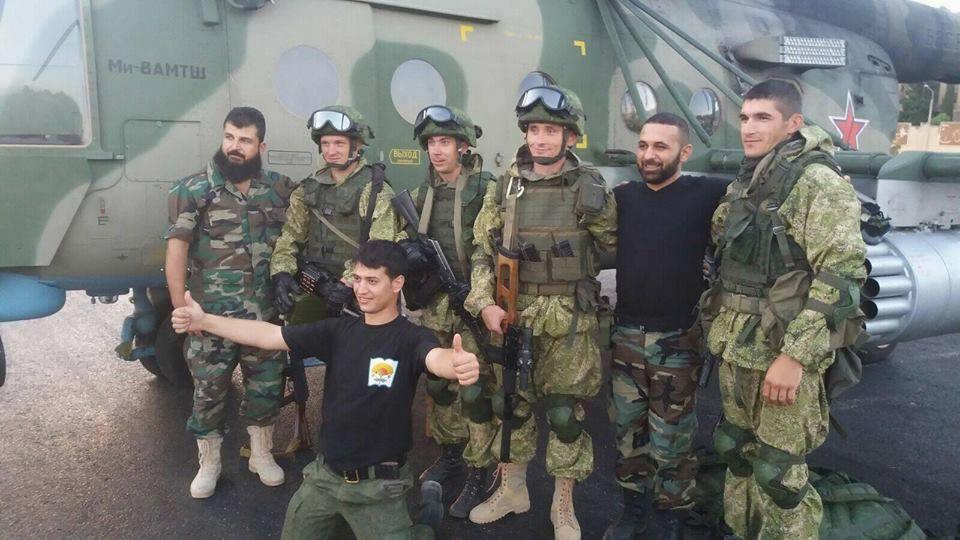by David Isenberg
Something almost unprecedented has been happening in the world of private military contracting (PMC) over the past several months: the reemergence of an actual private military company. This company is putting the military back in the PMC. It’s something we’ve not seen in at least 20 years. And we have Russia to thank for it.
Once upon a time, back when the modern PMC industry was just coalescing into an industry and beginning to attract public notice, there really was such a thing as a private military company. No, it wasn’t Blackwater, or DynCorp. Those companies are private security companies. Although their armed contractors carry weapons and use them in defense of the clients or convoys they are protecting, they do not engage in offensive combat operations. They may come under and return fire, but their goal is to do so only long enough to get the client out of danger.
The company was Executive Outcomes (EO). On behalf of the Angolan government the South African-based company fought Jonas Savimbi’s UNITA rebel movement in 1992 and in 1995 fought the murderous Revolutionary United Front, infamous for cutting off the arms and legs of civilians, in Sierra Leone.
In both countries, EO was credited with rescuing both governments. More importantly, EO provided all aspects of a highly trained modern army to the less professional government forces of Sierra Leone and Angola. In Sierra Leone, EO deployed not only professional soldiers but also used armor and support aircraft, infantry fighting vehicles, and even a main battle tank (albeit provided by the client state). For details see my 1997 report here. EO was the first company, in modern times, since the end of the Cold War, to do this.
True, both during the Cold War and since, governments have unofficially hired mercenaries to act as their proxies—think U.S. backing for the Contras against Nicaragua—back when they were concerned about things like plausible deniability. But no other PMC has engaged in offensive combat operations since. That is, until now.
Russian Mercenaries
Recently, the Russian newspaper Fontanka reported that the Kremlin hired fighters—paid by the ChVK Wagner company, formed out of the vestiges of the Slavonic Corps—to fight in both Ukraine and against the Islamic State (ISIS or IS) in Syria. The original article, in Russian, is here, and in English here.
Unlike every other head of state, Vladimir Putin has spoken firmly in support of PMCs. Fontanka noted that, “In 2012, when he was Russian prime minister, he argued they should be legalised saying they were “a tool for the implementation of national interests without direct participation of the state.”
According to Fontanka, the only documentary evidence of the existence of Wagner comes in the form of documents signed by President Putin himself.
The article says that the Wagner PMC has an arsenal of armored fighting vehicles, portable anti-aircraft systems, and mortars, and that it has been operating in Syria since fall 2015.
If the Fontanka article is accurate this is the largest and most militarily organized PMC since Executive Outcomes existed. A former fighter outlined its capabilities:
Three reconnaissance-assault companies, each with ninety to a hundred men. Three platoons with recoilless rifles and automatic grenade launchers – a fire support company. An air defense company with Iglas [Russian man-portable surface to air missile]. A communications company. Guard company. The medical unit. Plus civilian service personnel. Without civilians – six hundred people.”
Fontanka also reported that Wagner has taken dozens of casualties. One survivor reported that of a company of 93 men sent to Syria last September, only a third returned without injury. If those figures are true it may be because the PMC leadership and tactics are not very good. The former fighter continued,
“It’s right out of the Second World War, all that’s missing are bayonets on the AKs. Outside Debaltsevo, the men were booted out of their vehicles in a field, and given the order to seize a fortification or a blockpost. And forward, just like meat. When they started up on us with 120 mm [guns], with RPGs on the vehicles, people… they just vomited. Direct hit from an RPG – only hands and feet remain. No one is sent out to battle from Molino without training, but they only manage to learn the basics of how to shoot so as not to die immediately.”
The Problem with Mercenaries
This may come as a shock to Bill O’Reilly, the Fox News pundit. In September 2014 he called for the creation of a mercenary anti-terror army to fight IS. He is not the only one to do so. But with the exception of Erik Prince, the former head of Blackwater, he is the most prominent.
The experience of Wagner also vindicates talk-show host Stephen Colbert who had mocked O’Reilly’s proposal:
“You know these mercenaries will be good guys because only the best people kill whoever you want for cash. It’s quality folks, is what I’m saying—unlike those suckers who do it for love of country,” said Colbert.
However, the success, or lack thereof to date, of PMC Wagner is not the issue. The creation and use of private military forces armed with modern weaponry is what should concern us. It is like the ultimate NRA fantasy come to life.
And if Russia does make this a permanent thing, you can be sure other states will follow.





